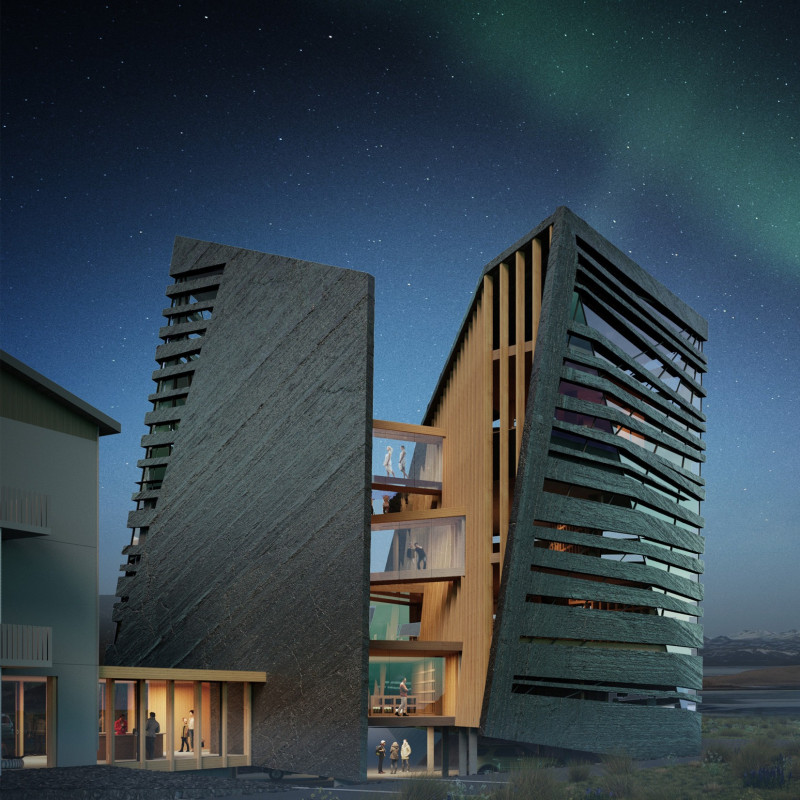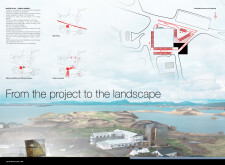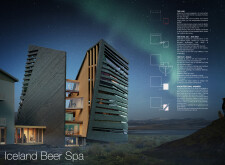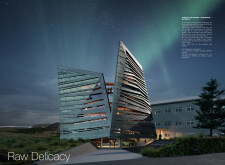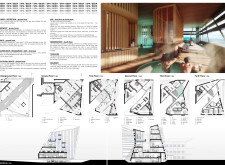5 key facts about this project
## Overview
The Iceland Beer Spa is situated in a rugged region of Iceland, embodying a blend of architectural design, natural landscape, and cultural experience. The project aims to create a dialogue between the built environment and its surroundings, drawing inspiration from the local terrain to reflect both heritage and contemporary design principles.
## Spatial Strategy and User Experience
The master plan addresses user circulation by establishing defined pathways that guide visitors through the facility. The layout promotes intuitive navigation from the main entrance to key attractions, such as the brewery and spa areas. The incorporation of dual interlinked volumes encourages exploration within the space while serving distinct functions—wellness and leisure—without compromising accessibility. Public areas, including a central lobby and adjacent cafés, foster social interaction, enhancing the overall visitor experience.
## Materiality and Aesthetic Integration
The building employs a distinctive material palette that resonates with the Icelandic landscape. Natural stone serves both structural and aesthetic roles, creating a visual connection to local geology. Wood elements provide warmth and contrast to the stone's rugged texture, while expansive glass surfaces invite natural light and frame impressive views of the surrounding environment. This thoughtful use of materials not only reinforces the connection to nature but also emphasizes sustainability through energy-efficient systems and local sourcing. The interior environments balance contemporary design with traditional materials, cultivating a space that embodies rustic luxury.


